Owned by Canada’s federal government, the Museum of Immigration's mandate is to “... explore the theme of immigration to Canada in order to enhance public understanding of the experiences of immigrants as they arrived in Canada, of the vital role immigration has played in the building of Canada and of the contributions of immigrants to Canada’s culture, economy and way of life.”
The Museum occupies Pier 21, a National Historic Site in Halifax harbor and one of Canada’s equivalents to Ellis Island: “the gateway to Canada for one million immigrants between 1928 and 1971...[and] the departure point for 368,000 Canadian Military personnel during the Second World War.”
We asked Marie Chapman, the Museum’s director, which of the empathetic characteristics characteristics of institutional empathy she felt most resonated for her institution. Without hesitating, she said “Civic Vision”.
The Museum occupies Pier 21, a National Historic Site in Halifax harbor and one of Canada’s equivalents to Ellis Island: “the gateway to Canada for one million immigrants between 1928 and 1971...[and] the departure point for 368,000 Canadian Military personnel during the Second World War.”
We asked Marie Chapman, the Museum’s director, which of the empathetic characteristics characteristics of institutional empathy she felt most resonated for her institution. Without hesitating, she said “Civic Vision”.
(Left) Attendees and Pier 21 interpreters Ann Marie Begin and Scott Stewart during the opening of the Canada: Day 1 temporary exhibit, April 11th, 2017.
(Middle) Performers at the Rhythms of Life concert in honour of African Heritage Month, February 18th, 2017.
(Right) Maurice Tomlinson presents during the In and Out in Canada Halifax Pride event, July 19th, 2016.
(Middle) Performers at the Rhythms of Life concert in honour of African Heritage Month, February 18th, 2017.
(Right) Maurice Tomlinson presents during the In and Out in Canada Halifax Pride event, July 19th, 2016.
Halifax is a city of 300,000 people and is capital of the Province Nova Scotia, which has a total population of just under one million. Halifax itself is a major tourist hub for Maritime Canada and the Museum itself is a tourist attraction, located adjacent to a cruise shop pier. However, it takes its civic role seriously, in building a local community culture rooted in curiosity rather than judgment: “Hearing someone’s accent means they can speak another language, while I can’t,” Marie says. “I have always said, I want elementary school kids to go to school, open up their lunchboxes and not be singled out or teased.”
While Nova Scotia has significant histories of non-white peoples going back over four centuries of immigration and thousands of years of First Nations history, the province does not reflect the diversity of the rest of Canada: over three-quarters of Haligonians (Halifax citizens) have ethnic origins in Great Britain or France compared to about 37% of Canadians (2006 Canadian Census). The Museum, therefore, works hard to be as inclusive as possible and is home to a cadre of volunteers reflecting surprising diversity in their ages, gender identities and cultures. After all, Chapman says, “With the exception of our First Nations peoples, Canada is a nation of immigrants. People get to be who they are in Canada, and people immigrate here to do that. It is really important to have this diversity in our institution so people can walk in and see it for themselves”.
PROGRAMS
The Museum is closely involved with many local cultural, immigrant and settlement organizations, all of whom need year-round places to perform, meet and display, and the Museum provides free spaces for all of these purposes; for Halifax’ diverse communities, the museum is a civic “front porch”. The Museum works hard to reach out beyond regular museum-goers and hosts a wide variety of on-site and outreach programs which attracts a diverse cross-section of the community, often from demographics which are not regular museum visitors. “As the director, it is very cool for me to go into a room during one of these events and not recognize anybody there!”, Marie says. Offerings include talks, book talks, films, spoken word, hip-hop, and other cultural performances. For Black History month, the museum hosted a “Dueling Piano” performance by a father and son duo, who wove their musical performance with reminiscences of immigrant life in Toronto.
While Nova Scotia has significant histories of non-white peoples going back over four centuries of immigration and thousands of years of First Nations history, the province does not reflect the diversity of the rest of Canada: over three-quarters of Haligonians (Halifax citizens) have ethnic origins in Great Britain or France compared to about 37% of Canadians (2006 Canadian Census). The Museum, therefore, works hard to be as inclusive as possible and is home to a cadre of volunteers reflecting surprising diversity in their ages, gender identities and cultures. After all, Chapman says, “With the exception of our First Nations peoples, Canada is a nation of immigrants. People get to be who they are in Canada, and people immigrate here to do that. It is really important to have this diversity in our institution so people can walk in and see it for themselves”.
PROGRAMS
The Museum is closely involved with many local cultural, immigrant and settlement organizations, all of whom need year-round places to perform, meet and display, and the Museum provides free spaces for all of these purposes; for Halifax’ diverse communities, the museum is a civic “front porch”. The Museum works hard to reach out beyond regular museum-goers and hosts a wide variety of on-site and outreach programs which attracts a diverse cross-section of the community, often from demographics which are not regular museum visitors. “As the director, it is very cool for me to go into a room during one of these events and not recognize anybody there!”, Marie says. Offerings include talks, book talks, films, spoken word, hip-hop, and other cultural performances. For Black History month, the museum hosted a “Dueling Piano” performance by a father and son duo, who wove their musical performance with reminiscences of immigrant life in Toronto.
Marie Chapman speaks passionately of how people who lived the immigrant experience are the “real experts” on the subject, so the Museum relies on them – both within the Museum’s staff, and more so with community leaders and partners – to develop and lead programs. “With our programs, we try to frame the conversations, and get the conversations going.”
The Museum hosts nearly a dozen different educational programs on empathetic communications, citizenship, cultural identity, the immigrant experience and historical research. A hallmark program that reflects the Museum’s community role is its Community Presents series, an ongoing outreach program empowering local cultural groups and heritage organizations to tell their own stories by creating their own museum exhibitions, supported by Museum staff. Two recent examples include:
Mosaic: Identity and Community Connection, led by a mixed media artist and anthropologist, created an opportunity for immigrant and migrant women to collaborate in making art and create an exhibit “that would enhance the participants' identity, sense of place, belonging and community connection”. This project was the first involvement with a museum for most of the participants and it reflects the Museum’s close community relationships, among them the Immigrant Migrant Women’s Association of Halifax; it has been such a success that it will now travel.
The No. 2 Construction Battalion, created by the Black Cultural Centre for Nova Scotia, commemorated the overseas departure of the No. 2 Construction Battalion, the first and last all-Black Canadian Army unit. Canadians have remarkably little knowledge of their country's black history. Nova Scotia’s black history stretches back to 1605 and includes slavery until it was outlawed in 1833. Black communities established settlements around the province and continued to experience discrimination in all forms, including Jim Crow. Until the No. 2 Construction Battalion was raised, blacks were prevented from enlisting. Chapman says, “We love to do these projects...we have space and some expertise in creating exhibitions and logistics. This gives the community the opportunity to have conversations on their terms.”
The Museum hosts nearly a dozen different educational programs on empathetic communications, citizenship, cultural identity, the immigrant experience and historical research. A hallmark program that reflects the Museum’s community role is its Community Presents series, an ongoing outreach program empowering local cultural groups and heritage organizations to tell their own stories by creating their own museum exhibitions, supported by Museum staff. Two recent examples include:
Mosaic: Identity and Community Connection, led by a mixed media artist and anthropologist, created an opportunity for immigrant and migrant women to collaborate in making art and create an exhibit “that would enhance the participants' identity, sense of place, belonging and community connection”. This project was the first involvement with a museum for most of the participants and it reflects the Museum’s close community relationships, among them the Immigrant Migrant Women’s Association of Halifax; it has been such a success that it will now travel.
The No. 2 Construction Battalion, created by the Black Cultural Centre for Nova Scotia, commemorated the overseas departure of the No. 2 Construction Battalion, the first and last all-Black Canadian Army unit. Canadians have remarkably little knowledge of their country's black history. Nova Scotia’s black history stretches back to 1605 and includes slavery until it was outlawed in 1833. Black communities established settlements around the province and continued to experience discrimination in all forms, including Jim Crow. Until the No. 2 Construction Battalion was raised, blacks were prevented from enlisting. Chapman says, “We love to do these projects...we have space and some expertise in creating exhibitions and logistics. This gives the community the opportunity to have conversations on their terms.”
Joan Smith of the indigenous drumming group All Nations Drum performs a traditional welcome song during the opening of Mosaic: Identity and Community Connection art exhibit, March 8th, 2017.
María José Yax-Fraser of the Immigrant/Migrant Women's Association of Halifax addresses the crowd during the opening of the Mosaic: Identity and Community Connection art exhibit, March 8th, 2017.
EXHIBITS
The Museum hosts traveling exhibits and develops its own temporary exhibitions on themes of immigration and diversity. It recently hosted Ordinary Lives, Extraordinary Times: Italian Canadian Experiences During World War II, which uses some of the museum’s 900+ oral histories to describe the experience of Canada’s Italian community, deemed “enemy aliens” by the Canadian Government” starting in 1940; those considered most “dangerous” were sent to internment camps in Alberta, Ontario, and New Brunswick for up to five years. Safe Haven: Canada and the 1956 Hungarian Refugees commemorates the Canadian resettlement of 38,000 Hungarian refugees who fled their homeland under the Soviet invasion, many of whom passed through Pier 21 in Halifax.
As a collecting institution, the Museum focuses on intangible or digital-born and digitized items, including oral histories, written stories, and digital archival materials on historical and contemporary immigration, refugee and displaced person themes, in addition to the history of Pier 21 itself. This includes a growing oral history collection of over 1200 interviews with immigrants, immigration officials, soldiers and others associated with Pier 21. This growing cultural resource augments the Museum’s existing historical immigration and genealogy research resources.
Marie Chapman says, “We’re a museum of immigration, so some of this comes naturally to us”, yet she recognizes that building institutional empathy is an ongoing journey. She appreciates how the Rubric provides the opportunity for institutional self-assessment and planning.
The Museum hosts traveling exhibits and develops its own temporary exhibitions on themes of immigration and diversity. It recently hosted Ordinary Lives, Extraordinary Times: Italian Canadian Experiences During World War II, which uses some of the museum’s 900+ oral histories to describe the experience of Canada’s Italian community, deemed “enemy aliens” by the Canadian Government” starting in 1940; those considered most “dangerous” were sent to internment camps in Alberta, Ontario, and New Brunswick for up to five years. Safe Haven: Canada and the 1956 Hungarian Refugees commemorates the Canadian resettlement of 38,000 Hungarian refugees who fled their homeland under the Soviet invasion, many of whom passed through Pier 21 in Halifax.
As a collecting institution, the Museum focuses on intangible or digital-born and digitized items, including oral histories, written stories, and digital archival materials on historical and contemporary immigration, refugee and displaced person themes, in addition to the history of Pier 21 itself. This includes a growing oral history collection of over 1200 interviews with immigrants, immigration officials, soldiers and others associated with Pier 21. This growing cultural resource augments the Museum’s existing historical immigration and genealogy research resources.
Marie Chapman says, “We’re a museum of immigration, so some of this comes naturally to us”, yet she recognizes that building institutional empathy is an ongoing journey. She appreciates how the Rubric provides the opportunity for institutional self-assessment and planning.
Attendees at the opening of the Journey to Canada temporary exhibit on Ukrainian immigration, July 21st, 2016.

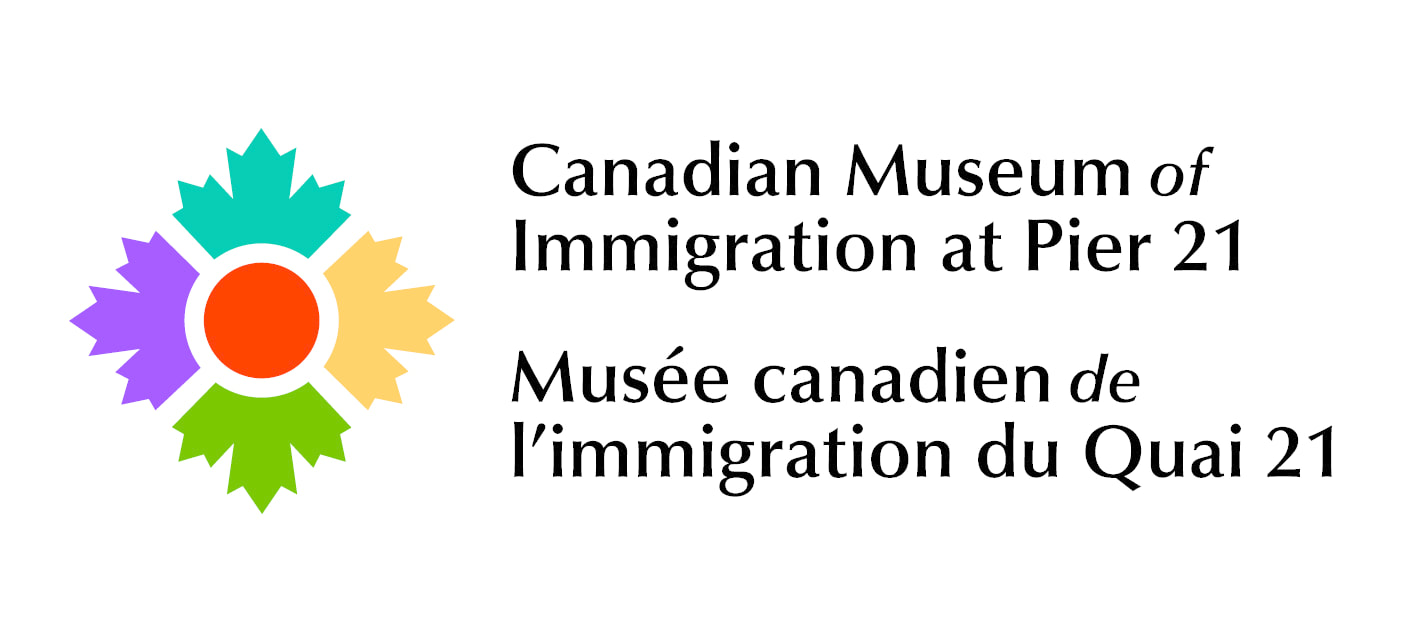
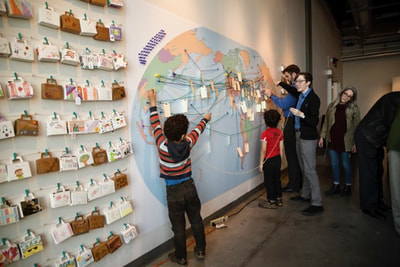
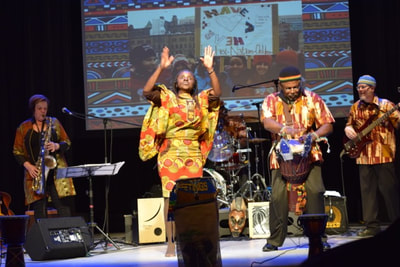
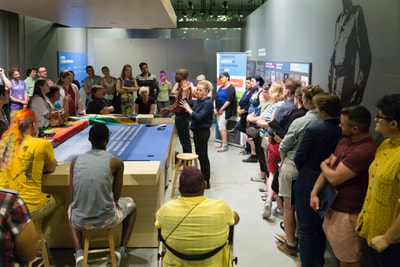
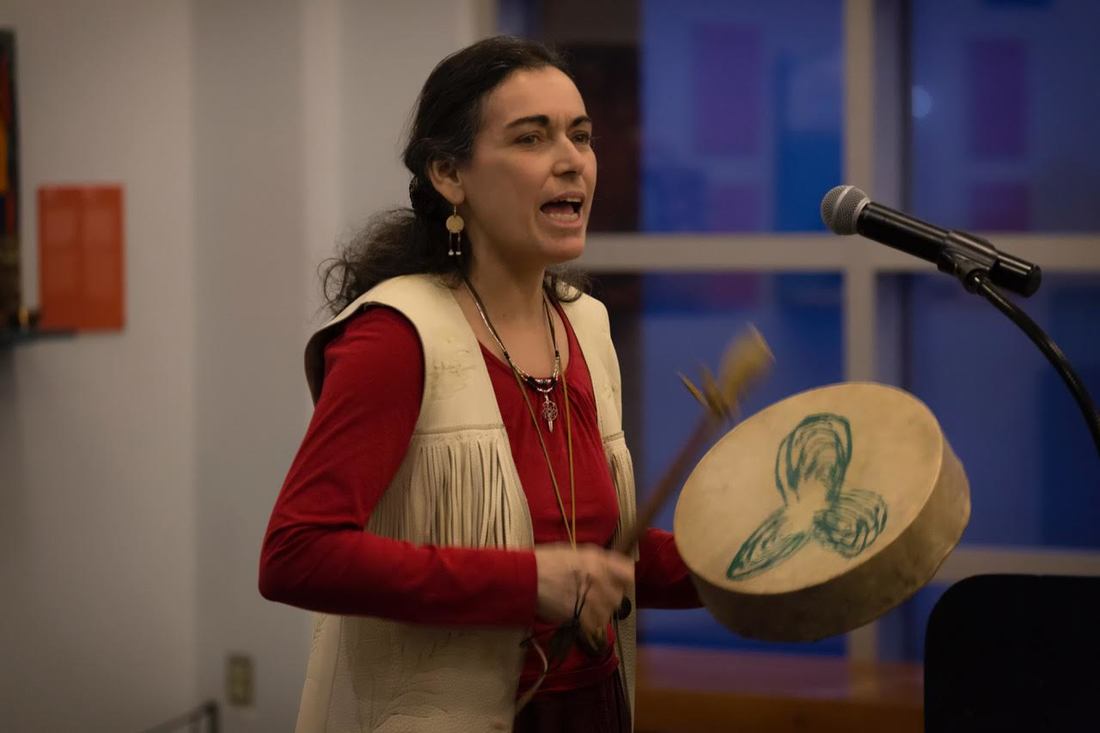
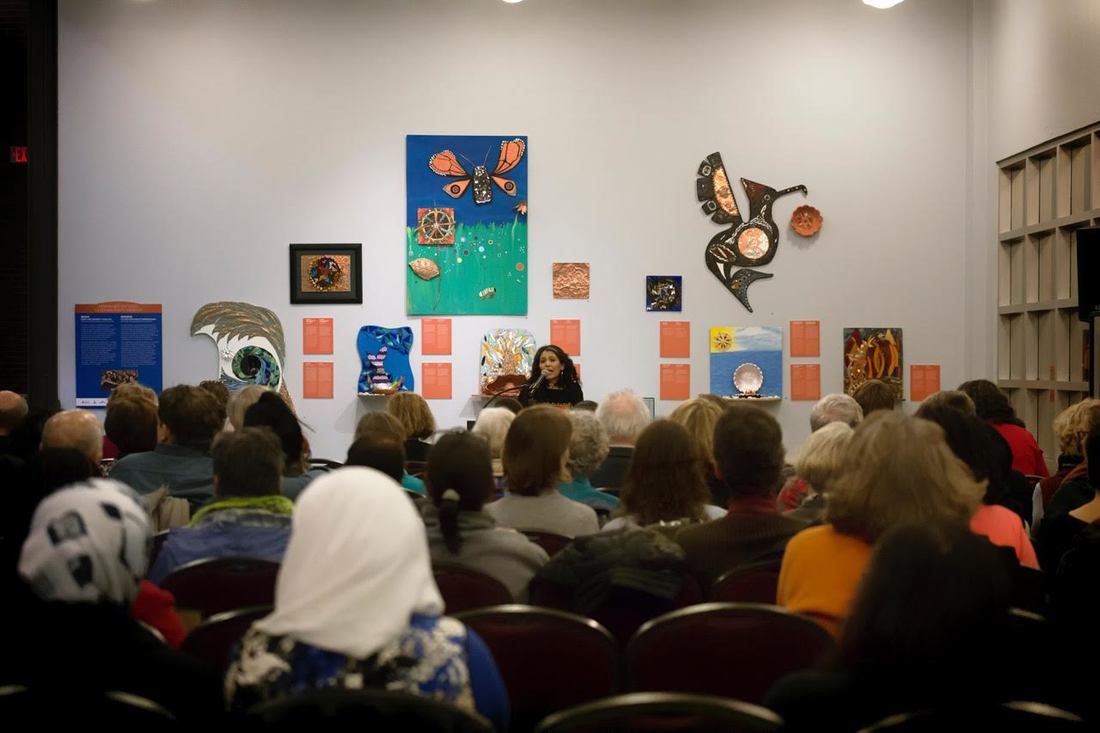
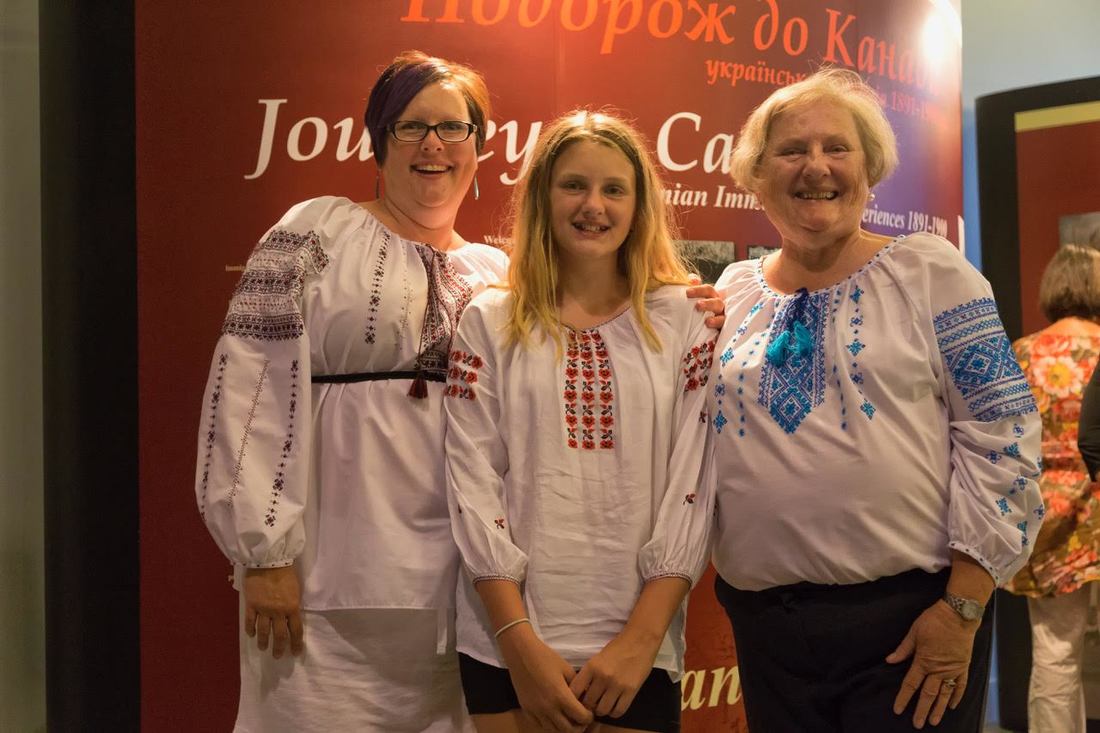

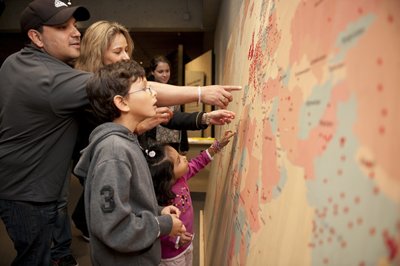
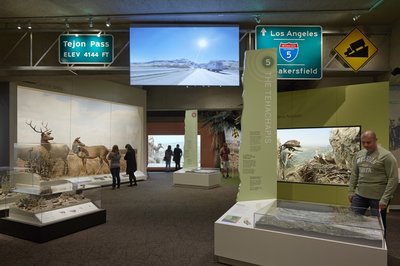
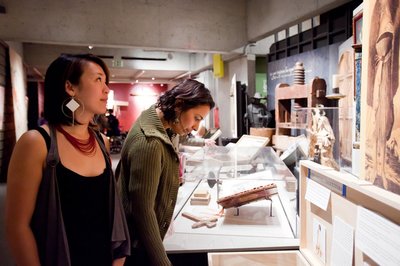
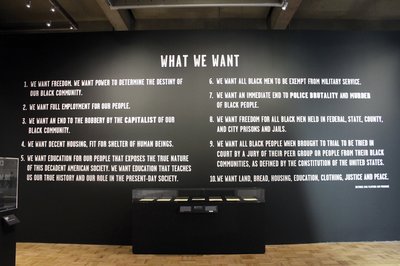
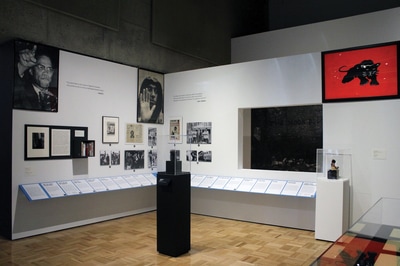
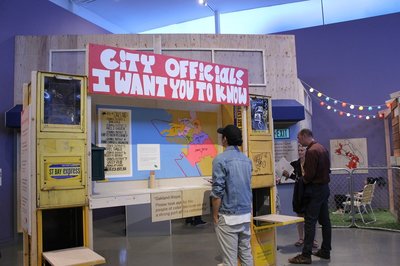
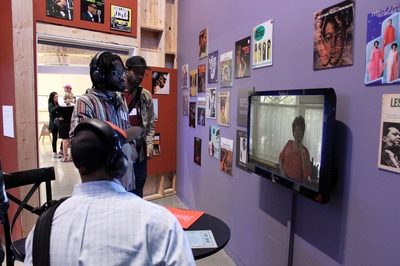
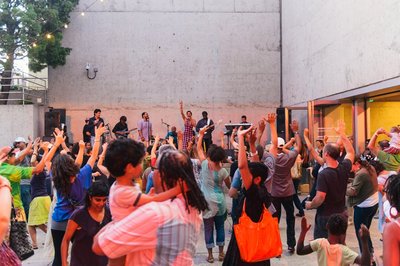
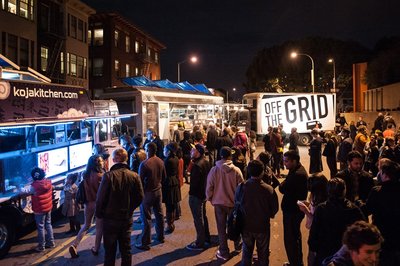

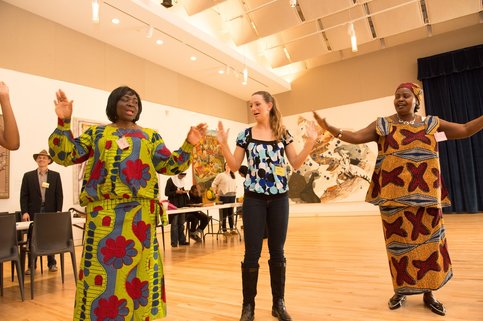
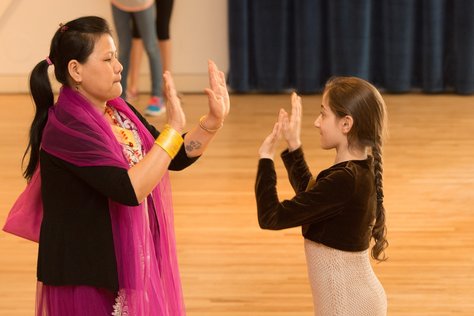
 RSS Feed
RSS Feed
